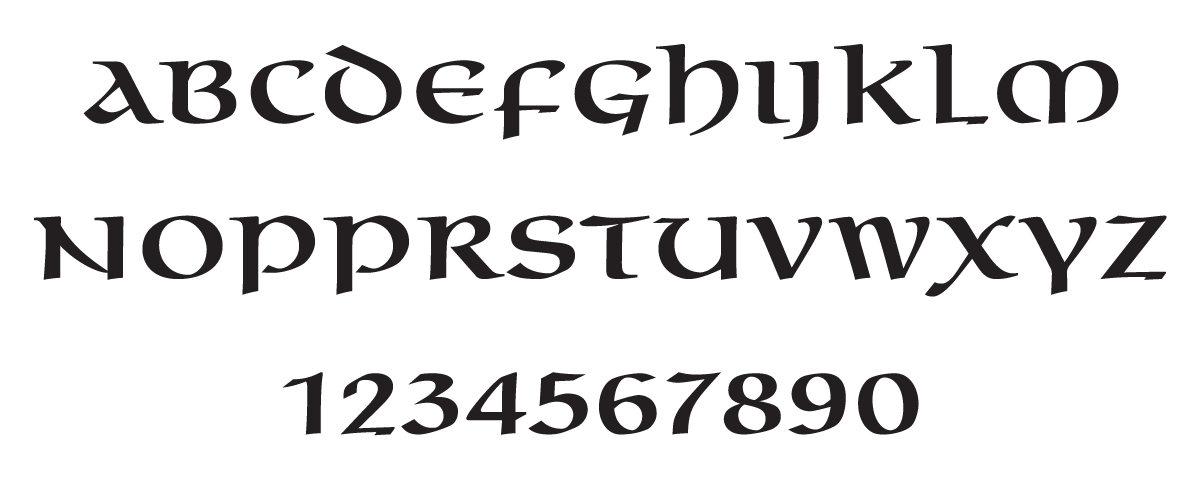Every year we trundle out the “Gaelic fonts,” for St. Patrick’s Day. Uncials are popularly associated with the Book of Kells and all things Celtic. Insular (Irish) scripts descended indirectly from Byzantine Greek scripts which inspired a Latin version in the west based on Roman cursive. The ascenders and descenders in uncials were forerunners to lower case.

Libra, an uncial typeface from Bitstream
With the invention of moveable type, blackletter, was the first script to be cast in metal. Blackletter was soon competing with the more readable Roman types that were based on the easy-on-the-eye Italian humanist minuscule (also called Antiqua) which came from earlier, highly legible Carolingian Minuscule scripts.
Uncials had been out of use for many centuries when they were re-introduced as display types for printers in the 19th century and used for decorative, deliberately-antiquarian purposes. Now, of course, they are available digitally, and so closely associated with all things Irish, that they could be classified as “chop suey” typefaces.
The etymology of uncial goes something like, “from Latin uncialis, from uncia (inch),” but Alexander & Nicholas Humez, in their brilliant book ABC et Cetera: the Life & Times of the Roman Alphabet, offer other etymologies. Uncial also could have been St. Jerome’s reference to either illuminated letters, or to “hooked” letters, depending upon how uncialibus was misspelled.

Omnia, an uncial typeface from Linotype
Either way, Jerome, the saintly Dalmatian had sound advice: Use uncials sparingly. Nowadays, they are more likely to be associated with clovers, leprechauns, green beer, and kelly green “Kiss me, I’m Irish” t-shirts than with early mediaeval monastic scribes.

